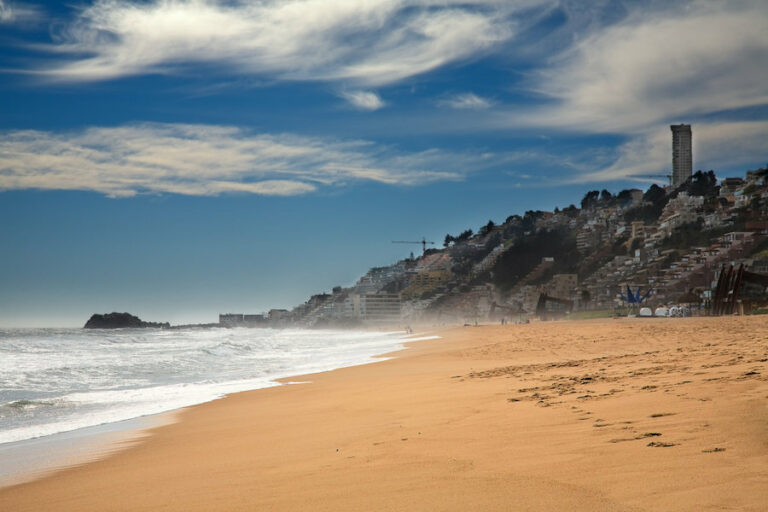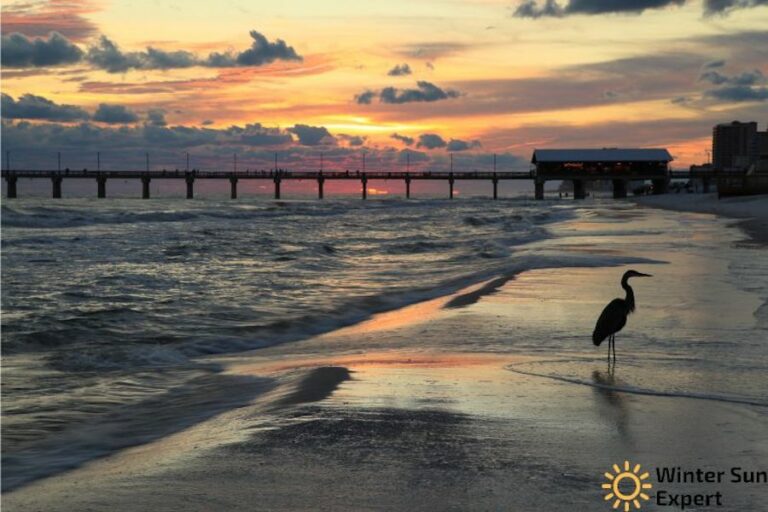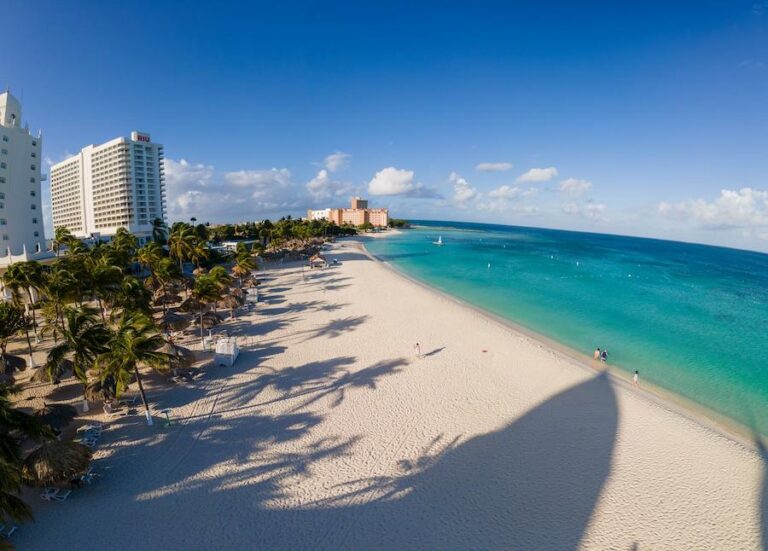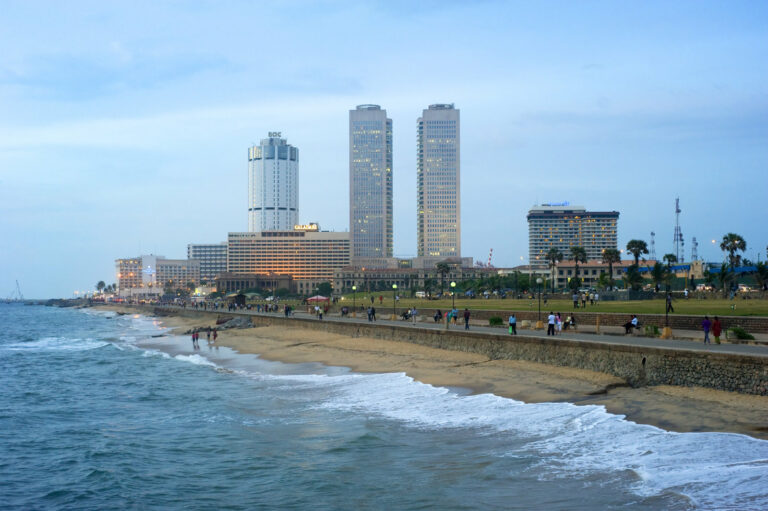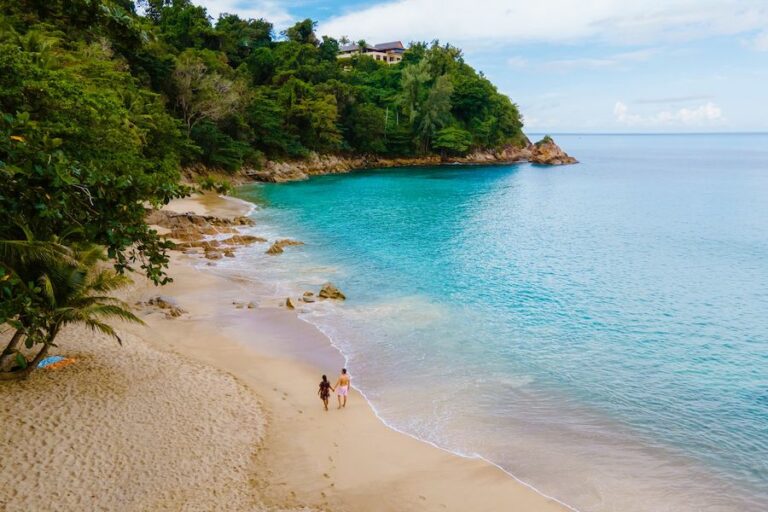Top 3 Best European Winter Sun Destinations in November
Europe is one of the best parts of the world to seek refuge from the cold in November because most European countries have pleasantly warm weather at this time of the year, and many tourist hotspots are less crowded. However, picking the perfect destination can be tricky because there are many options with varying weather conditions, attractions, and budgetary demands. If you’re looking to explore Europe in November but aren’t sure where to start, I’ve got a few suggestions.
These are the results from our survey where we asked our visitors for the top 3 best European winter sun destinations in November.
The top 3 best European winter sun destinations in November are the Canary Islands in Spain, Madeira in Portugal, and Sicily in Italy. The cities offer a unique blend of great weather, natural and historical attractions, and unique cuisine. They’re also safe and less crowded in November.

Read on to learn why each location makes the cut in this list of the best European winter sun destinations in November.
Contents
- 1 1. The Canary Islands, Spain
- 2 2. Madeira, Portugal
- 3 3. Sicily, Italy
- 4 How this Top 3 list was made
1. The Canary Islands, Spain
The Canaries are a Spanish Archipelago located in the Atlantic Ocean, about 100km (62 mi.) off the nearest mainland in northwest Africa: Morocco. These islands are an autonomous community of Spain and have a lot to offer sun-seekers looking to visit in November.
Here’s a rundown of the main reasons the Canary Islands top my list of the best European winter sun destinations in November.
The Canary Islands Have Great Weather in November
The main reason the Canaries take the number one spot in my list of top 3 European winter sun destinations in November is the weather.
These islands are dubbed “the sunshine center of Europe” for a reason. Their subtropical climate ensures year-round sunny weather and pleasant temperatures, making this one of the best regions to visit in November.
The Canaries enjoy an average of about 300 days of sunshine per year. Temperatures rarely drop too low, even in winter, so you can stay beyond November and sit out the cold season in one of the world’s most beautiful regions.
For those interested in the numbers, average daytime temperatures in November range from 20°Cto 25°C (68°F to 77 °F). The evenings and nights are cooler, with temperatures ranging from around 15°C to 19°C (59°F to 66°F).
It’s worth noting that there may be slight temperature variations between individual islands. Tenerife and Gran Canaria are the warmest islands, while La Palma tends to be slightly cooler than the rest of the archipelago.
The Canaries Are One of the World's Most Beautiful Archipelagos
Beauty may be subjective, but few who’ve been there would disagree that the canary islands are some of the most picturesque destinations in the world. This archipelago is home to many scenic natural attractions, including mountain ranges, rugged coastlines, beautiful sandy beaches, stunning volcanic formations, and lush forests.
Some of the natural attractions you won’t want to miss if you decide to visit include:
Lanzarote’s Volcanic Scenery
The easternmost and northernmost island of the Canaries has such unique volcanic formations that multiple films have been set here.
There are more than 10 geological attractions on Lanzarote, and I’d recommend visiting all of them if you have the time and money. If that’s not possible, make the Timanfaya National Park a top priority; it’s the most beautiful place on the island.
Fuerteventura and Gran Canaria’s Beaches
These are two of the best Canary Islands for anyone looking to spend quality time on the beach. Both islands have beautiful beaches with sand dunes, but they have slight differences that may be enough for some people to choose one over the other.
Fuerteventura may be a better fit for seniors because it’s less crowded and has a more family-friendly vibe. It’s also cheaper and has more laid-back nightlife.
Gran Canaria, on the other hand, has a more diverse landscape, making it a better choice for those seeking a combination of beautiful beaches and extra exploration options. This island is also better suited to younger adults and couples.
La Palma and La Gomera’s Lush Forests
La Palma’s lush forests are the main reason the island has been dubbed “Isla Bonita,” which translates to “the beautiful island.” It’s the Canaries’ greenest island and home to some of the most unique ecological treasures. Several plant species, including the Canary Islands Pines, are native to this beautiful island.
La Gomera's forests are known for their ancient and well-preserved ecosystems, rich biodiversity, and remarkable geological features.
Because the island is somewhat isolated, most of its forests have existed for millions of years without human interference. This helped preserve some of the oldest plant and animal species to ever exist on the island. Add to that the island’s uniquely rugged, mountainous terrain, and you’ve got the perfect hotspot for anyone looking to catch a glimpse into the region's ecological history and explore unique and endangered species.
The Dramatic Cliffs of Los Gigantes in Tenerife
Terenife’s Los Gigantes truly live up to their name (Los Gigantes means “the Giants”). These gigantic cliffs soar as high as 600 m (1,970 ft), and the sight they create as they dramatically plummet into the sea is nothing short of spectacular.
The cliffs’ height isn’t the only attraction here. The 30 m (100 ft) deep sea below has interesting sea life and can be a great spot for trophy fishing and diving.
The Canaries Are Home to Numerous Cultural Attractions
The Canary Islands are home to several UNESCO World Heritage Sites, each with a unique cultural, natural, or geological significance. Some of the must-sees include:
- The Garajonay National Park in La Gomera.
- The historic town of San Cristóbal de La Laguna in Tenerife.
- Teide National Park in Tenerife.
- La Palma Biosphere Reserve in La Palma
A quick tip: If you’re big on all things heritage and culture, I’d suggest pushing the island of Tenerife to the top of your must-visit areas list. It has some of the most famous heritage sites, not to mention that it hosts several cultural festivals in November.
The Canaries are Safe for Tourists
Crime rates are generally low in the Canaries. A few isolated cases aside, most visits are trouble-free as long as you stay vigilant and take common-sense precautions to protect your stuff when you’re out and about.
The Canaries are also safe from natural hazards because their location outside the main Hurricane Belt puts them out of reach of these powerful storms. Volcanic activity is rare, and the authorities have comprehensive contingency plans to keep everyone safe in an emergency. Medical facilities are well-equipped, and emergency response facilities well-maintained.
2. Madeira, Portugal
My second pick is an archipelago located a little farther from the coast of Morocco – about 350 mi. (560 km) – than the Canaries. Sitting about 600 mi. (970 km) southwest of Lisbon, this group of islands is known for stunning natural landscapes that include lush forests, rugged mountains, and picture-perfect coastal cliffs.
Madeira has a great climate year-round; it never gets too hot or cold. November is a particularly great time to visit this part of Portugal because it’s less crowded around this time of the year.
Temperatures average 18°C to 22°C (64°F to 72°F) throughout the month, allowing for all kinds of outdoor exploration. And while November marks the start of the rainy season, most days still see plenty of sunshine, and the rain rarely gets in the way of fun.
Maderia might not have the best beaches, but it makes up for that with stunning natural beauty. The “Pear of the Atlantic” has some of the most picturesque coastal scenery, lush green valleys, and mountains.
3. Sicily, Italy
Rounding up our list of the best European winter sun destinations in November is the Mediterranean’s largest island.
This incredible island has mild weather in November. The average daytime temperatures are 15°C to 20°C (59°F to 68°F), which is far better than you can find in most parts of North America around this time of the year. Evenings are slightly cooler, with temperatures dropping to about 10°C (50°F).
Sicily sees some rain in November. However, the showers are usually not as frequent and heavy as in the winter, and most days see about six hours of sunlight. In short, Sicily has pleasant-enough weather for most outdoor fun activities.
Speaking of fun, this island is brimming with a unique blend of history, culture, nature, gastronomy, and relaxation spots. Some of its top attractions include:
- Historical sites such as The Valley of the Temples in Agrigento and The Roman Villa del Casale in Piazza Armerina.
- Archaeological sites such as Segesta, Selinunte, and Taormina.
- Cultural beacons such as the cities of Catania, Syracuse, and Palermo.
- Scenic landscapes such as Mount Etna (Europe's tallest active volcano), Zingaro Nature Reserve, the Alcantara Gorge, and the Aeolian Islands.
- Wine and food tours.
If none of the above attractions seem appealing, you can always treat yourself to a relaxing day at one of Sicily’s thermal baths and wellness centers. My top recommendations for this kind of fun would be Terme Segestane or Terme Vigliatore. In my opinion, these are the best spots to enjoy spa treatments, thermal pools, or any other type of relaxation therapy meant to rejuvenate the body and mind.
How this Top 3 list was made
The top 3 list was derived from a survey where we asked about their top destination for a particular month and region. From these results, we made each month a top 3 for North America, the Caribbean, Middle/South America, Europe, and Asia (including the Middle East). Sometimes, we have combined several individual destinations from a single country into the country itself.

